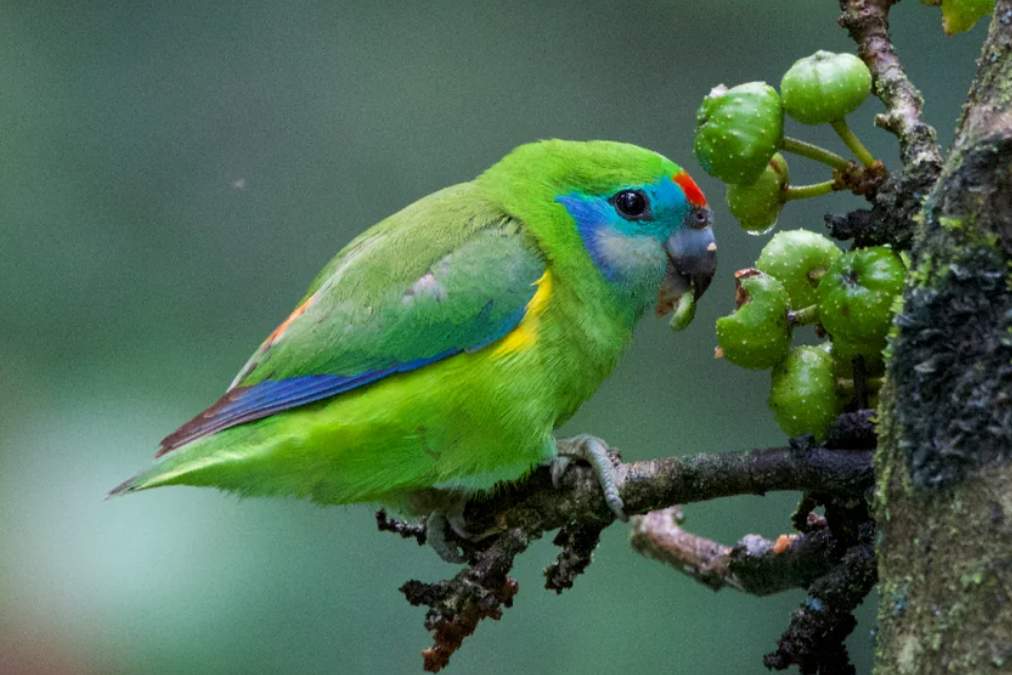The Song Sparrow (Melospiza melodia) is generally of medium build, though its size varies substantially, ranging from as large as a California Towhee in the Aleutian Islands of Alaska to as small as a Savannah Sparrow on the Channel Islands of California.
Its feathers are often seen on the striped chest and coat, although the population in the Mexican Plateau are spotted, with the whitethroat un-streaked away from Alaska and the Pacific Northwest, ventral streaking typically coalesces into a central breast spot.
Streaking or spotting is generally well defined on a whitish, grey, olive, or pale brown background; streak color varies from black to pale rufous. Moreover, the broad lateral crown stripes border a pale central stripe, but a different central crown is often inconspicuous. Irides and other bare parts are dark brown to blackish.
The Song Sparrow is often regarded as the most polytypic and variable species in North America and vies with the Horned Lark and Yellow Wagtail as the most polytypic bird species in the northern hemisphere, though each is less so than the Golden Whistler (Pachycephala pectoralis)of Australasia, the most polytypic in the world.
Variation across the Song Sparrow’s range is substantial and complex in both size and plumage, with little apparent association between mitochondrial DNA and morphological differentiation. Although the recent research using the more rapidly evolving microsatellite loci has detected a correlation between morphology and genes.
The subspecies are an excellent surrogate for underlying variation in the nuclear genome. Patterns of geographic variation in the Song Sparrow follow Gloger’s rule, a common trend in North American birds, with the darkest, most heavily pigmented birds in cold, humid northwest areas and the palest, least heavily pigmented in hot, dry southwestern regions.
Read about – The Tree and House Sparrow
Geographic variation also appears to follow Bergmann’s rule, with the largest birds in the cold Northwest and the smallest in the warm Southwest. There are 52 sub-specific names. Of the remaining 51 properly named subspecies, generally, 38–40 are recognized although only 15 possess unique characters, and recognize only 25 herein.
The Song Sparrow, as a ring species geographic variation can be partitioned readily into five subspecies groups: Eastern North America through the Great Basin – medium to small; brownish; wings long; breast streaked blackish (M. m. melodia, M. m. atlantica, M.m. montana).
(2) Alaska and the Pacific Northwest – large to medium; dark; breast streaks ruddy, diffuse (M. m. maxima, M. m. san-aka, M. m. insignis, M. m. kenaiensis, M. m. caurina, M.m. rufina, M. m. morphna, M. m. merrilli, M. m. cleonensis). The last subspecies is intermediate between M. m. morphnaand M. m. gouldii, so it might just as easily be placed in the California group.
(3) California – medium to small; grayish olive; wings short; breast streaked black (M. m. gouldii, M. m. samuelis, M.m. maxillaris, M. m. pusillula, M. m. heermanni, M. m.graminea).
(4) Desert Southwest and northwestern Mexico – small to medium; pale; breast streaked rufous (M. m. fallax, M. m. rivularis, M. m. goldmani).
(5) Mexican Plateau – small to medium; breast spotted; throatclean white (M. m. zacapu, M. m. adusta, M. m. villai, M.m. Mexicana).








